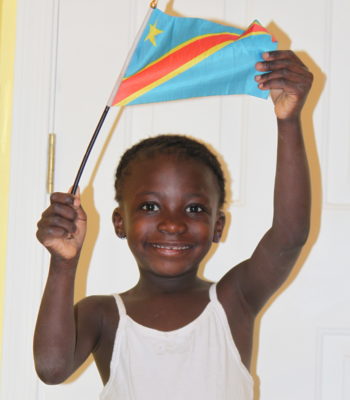 Appreciating, understanding and thriving in our multicultural world seems like an obvious goal for families who have adopted internationally. After all, you agreed to support your child’s interest in and ties to their home country and you purchased some toys and books for them while you were in country. You even prepare country-familiar foods for your child on occasion. But are you doing enough?
Appreciating, understanding and thriving in our multicultural world seems like an obvious goal for families who have adopted internationally. After all, you agreed to support your child’s interest in and ties to their home country and you purchased some toys and books for them while you were in country. You even prepare country-familiar foods for your child on occasion. But are you doing enough?
While it is easy to rest on your laurels and let your child become embraced by “all things American”, it is important that you continue to respect not only the culture of their home country but also the cultures of our global world.
We are certainly a globalized society. News, sports and lifestyle trends from all over the world come to us daily in all forms of media. Schools educate our children on the world around us and in many languages. Churches and faiths advocate for worldly understanding and assistance to less fortunate populations. Not-for-profit organizations work to assist those less fortunate with food, clothing, medical care, and shelter. Restaurants offer global cuisine tempting our taste buds with a wide array of offerings. Refugee assistance programs help those deserving of a better life for their families settle successfully in America. It is important for all of our children, adopted or not, to learn to appreciate and understand global cultures.
How can you do this? There are many ways to incorporate global learning into your lifestyle. Here are a few to get you started.
Talk About It
Flip on the news or lifestyle reports. Chances are you will quickly find a topic or event to discuss together. A storm in Haiti, a royal wedding in England, or a trendy article of clothing from the Paris runway all help you get the conversation started. It helps your children know that people everywhere engage in similar activities regardless of the country in which they live. The method of engagement or the customs may differ which leads to a vibrant discussion.
Embrace the Music
You can pair music with the cuisine you are serving for dinner to increase the ambiance. You can play multicultural music in your car while driving on family trips and talk about the instruments used and language spoken. You can show your children how music has influenced a country’s history, cultural practices or even the country’s imprint on the rest of the world.
Experience the World Vicariously Through Books and Movies
Maps can help your child begin to “get the big picture” of just how large the world is. It helps them see that it takes many countries and cultures to fill the globe. Picture books offer fabulous views of historical sites, cultural practices, native dress, and breathtaking country landscapes. The names of capitals and countries can be learned for social studies classes. What are the crafts, industries, recipes, and sports of a particular country? Movies are a way to experience different parts of the world without leaving home and help the unique cultures come alive. Teach your child to question and explore the world from their own home or local library.
Taste the Cuisine
Try new recipes and let your children help you prepare them with you. Talk about a fruit or vegetable not common in the US but used regularly in another country. Show it to them when in the grocery store. Take your child to the international foods aisle in your grocery store and talk about what is there and how it compares to what you normally eat. Go to a specialty grocery or international restaurant and ask for recommendations to share with your family. Always be willing to try something new and let your child’s taste buds explore a little.
Learn a Little Conversational Language from Another Country
Perhaps your older child can share some words they are learning in French class with the family. Translate a sign with your child that is written in both English and Spanish. Go to a church service celebrated in a different language. Perhaps you have friends or neighbors who can help you learn some sentences in another language. Community centers sometimes offer language classes so take advantage of these. Utilize your child’s birth country mentors to help keep their native language alive. It’s a fact that learning a different language at an early age allows for better retention and increases interest in learning.
Volunteer as a Family
Local community groups, churches, not-for-profit organizations, universities, and globally oriented businesses often offer opportunities to collect donations for a country in need after a disaster, a school in a foreign country who is need of supplies or participate in a special cultural community event. Volunteering and serving others makes a real difference and teaches your child to give back to others who are less fortunate than themselves. Doing this as a family creates a unique and very special bonding opportunity for you to share with your child and fosters selflessness and compassion.
Gifting Globally
Perhaps you have a local store that carries items made by fair trade artisans from developing countries. Craft fairs often have items made by local craftsmen who share the skills they learned internationally as a child. Churches sometimes sponsor sales of items from the countries their mission groups serve. Usually there are specialty shops and groceries featuring items and foods from certain countries, such as Mexican silver, baskets from Nepal, nested dolls from Ukraine, woolen mittens from Ecuador, or sweets from India. Let your child learn to make a difference one purchase at a time as you consider these locations for birthday presents, teacher appreciation gifts, or holiday giving.
Travel Intentionally
If you have the means to take your children on a global family adventure, please do. By planning ahead, your children can help identify important places to visit, make a list of the foods they want to try while in country and learn a few common words or phrases for greeting and appreciation to use while they are there (Hello, Thank You, and Where is the Bathroom?). Perhaps you can obtain some of the country’s currency from your bank or airport to help familiarize everyone with prior to travel. Learn some of the important cultural customs ahead of time so you can be polite and avoid becoming “the ugly American” during travel. If you can take your adopted child back to their country of origin, travel is even more special. Make your trip fun and one of family exploration!
There are so many ways to raise your child, adopted internationally or biological, to appreciate, understand and thrive as a global child. Never underestimate your child’s desire to learn, experience and explore new cultures. Connecting your child and family to multicultural opportunities creates a worldly vision—one that connects people through art, food, religious beliefs, and economics, accepts the beautiful diversity of mankind, and prepares children to respect, embrace and live successfully in our global world.
